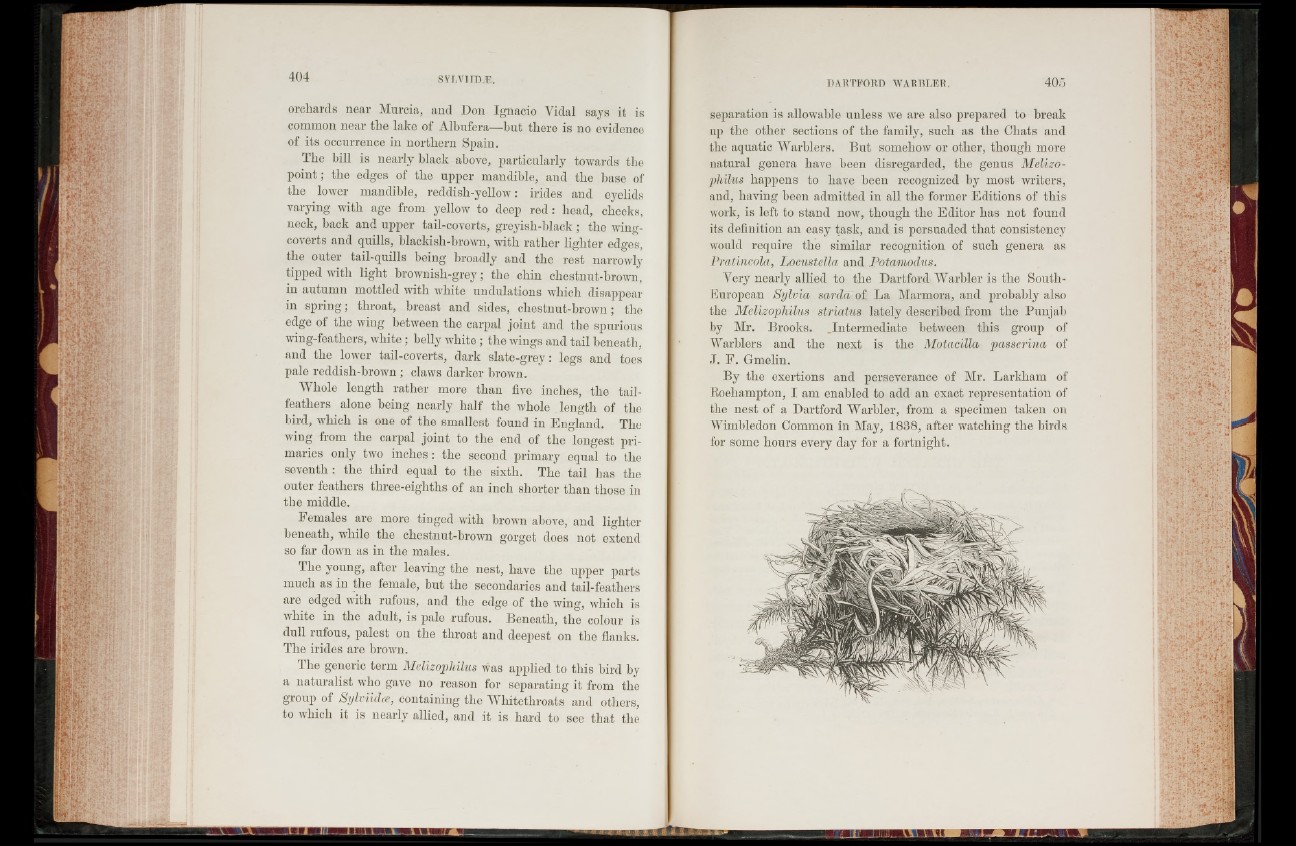
orchards near Murcia, and Don Ignacio Vidal says it is
common near the lake of Albufera—but there is no evidence
of its occurrence in northern Spain.
The bill is nearly black above, particularly towards the
point; the edges of the upper mandible, and the base of
the lower mandible, reddish-yellow: irides and eyelids
varying with age from yellow to deep red: head, cheeks,
neck, hack and upper tail-coverts, greyish-black ; the wing-
coverts and quills, blackish-brown, with rather lighter edges,
the outer tail-quills being broadly and the rest narrowly
tipped with light brownish-grey; the chin cliestnut-brown,
in autumn mottled with white undulations which disappear
in spring; throat, breast and sides, chestnut-brown; the
edge of the wing between the carpal joint and the spurious
wing-feathers, white ; belly white; the wings and tail beneath,
and the lower tail-coverts, dark slate-grey: legs and toes
pale reddish-brown ; claws darker brown.
Whole length rather more than five inches, the tail-
feathers alone being nearly half the whole length of the
bird, which is one of the smallest found in England. The
wing from the carpal joint to the end of the longest primaries
only two inches : the second primary equal to the
seventh : the third equal to the sixth. The tail has the
outer leathers three-eighths of an inch shorter than those in
the middle.
Females are more tinged with brown above, and lighter
beneath, while the chestnut-]trown gorget does not extend
so far down as in the males.
The young, after leaving the nest, have the upper parts
much as in the female, but the secondaries and tail-feathers
are edged with rufous, and the edge of the wing, which is
white in the adult, is pale rufous. Beneath, the colour is
dull rufous, palest on the throat and deepest on the flanks.
The irides are brown.
The generic term Melizophilus was applied to this bird by
a naturalist who gave no reason for separating it from the
group of Sylviidce, containing the Whitethroats and others,
to which it is nearly allied, and it is hard to see that the
separation is allowable unless we are also prepared to break
up the other sections of the family, such as the Chats and
the aquatic Warblers. But somehow or other, though more
natural genera have been disregarded, the genus Melizo-
philus happens to have been recognized by most writers,
and, having been admitted in all the former Editions of this
work, is left to stand now, though the Editor has not found
its definition an easy task, and is persuaded that consistency
would require the similar recognition of such genera as
Pratincola, Locustella and Potamodus.
Very nearly allied to the Dartford Warbler is the South -
European Sylvia sarda of La Marmora, and probably also
the Melizophilus striatus lately described from the Punjab
by Mr. Brooks. .Intermediate between this group of
Warblers and the next is the Motacilla passerina of
J. F. Gmelin.
By the exertions and perseverance of Mr. Larkham of
Roeliampton, I am enabled to add an exact representation of
the nest of a Dartford Warbler, from a specimen taken on
Wimbledon Common in May, 1838, after watching the birds
for some hours every day for a fortnight.